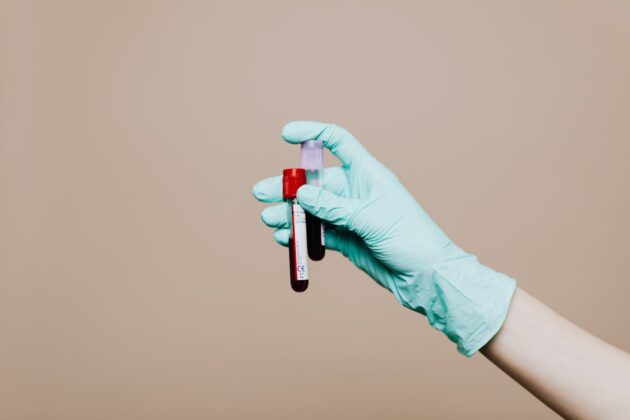
Hematology, the study of blood-related disorders, has increasingly relied on technology to enhance knowledge dissemination at global conferences. These gatherings serve as essential platforms for professionals in the field, allowing them to share research, collaborate, and stay informed about the latest advancements. With technological innovations transforming how information is presented and absorbed, the landscape of hematology conferences is evolving rapidly. This change fosters better communication between experts and opens avenues for patient care improvements.
Table of Contents
The Evolution of Conferences in Hematology
Over the past few decades, hematology conferences have transitioned significantly from traditional formats to more dynamic, interactive experiences. Historically, these events were characterized by long presentations followed by short Q&A sessions. However, the advent of digital technology has changed not only how content is delivered but also how it is consumed. Streaming capabilities now allow remote attendance, enabling global participation without geographical constraints. Tech advancements have introduced a variety of multimedia elements. Live polling and real-time Q&A sessions offer attendees the opportunity to engage directly with speakers, enhancing the learning experience. For those looking to deepen their understanding of these developments, there are resources where you can read more on the subject. Such opportunities create a more interactive environment, where complex data can be discussed collaboratively, which is invaluable in the progression of hematological research.
The Impact of Digital Tools on Learning
Digital technologies play a vital role in enhancing attendee learning at hematology conferences. Mobile apps designed for specific events provide real-time updates, session schedules, and networking opportunities. By facilitating connections among attendees, these applications ensure that knowledge-sharing extends beyond the lecture halls. Participants can build networks that last long after the conference ends, which can lead to fruitful collaborations and innovations in the field. Technologies such as virtual reality (VR) and augmented reality (AR) are beginning to make inroads into medical conferences. These immersive technologies can help illustrate complex hematological conditions, providing attendees with a 3D view of blood disorders that traditional slides or posters cannot offer. As a result, attendees leave with a deeper understanding of the material presented and its clinical implications.
The Role of Social Media in Knowledge Sharing
Social media has transformed the landscape of professional conferences, including those focused on hematology. Platforms like Twitter and LinkedIn now serve as real-time discussion forums, allowing attendees to share insights and resources instantly. A hashtag specific to a conference can consolidate diverse perspectives and critical information, making it easier to keep track of important discussions. Additionally, sharing insights through social media increases transparency in research. By disseminating findings quickly, researchers can garner feedback from peers, sparking further conversations that may lead to new questions or areas of exploration. This immediacy ensures that the knowledge gained during conferences contributes to ongoing research and discussion long after the event concludes.
Enhancing Accessibility through Technology
Technology has also made hematology conferences more accessible to a broader audience. Live streaming and recorded sessions allow healthcare professionals and researchers unable to attend in person to still access valuable content. Subtitles and translation services ensure that language barriers do not hinder participation, providing a global platform for knowledge exchange. These technologies have a profound effect on continuing education efforts as well. Participants who may be unable to travel due to personal or financial constraints can engage with expert presentations and discussions remotely. This expanded reach not only benefits individuals but also enhances the global conversation around hematological advancements.
The Importance of Collaboration in Hematology
The integration of technology in conferences facilitates collaboration among hematologists and related specialists. As researchers present their findings, technology enables instant feedback and discussion, leading to shared insights that go beyond individual studies. This collaborative spirit is critical in the realm of hematology where interdisciplinary approaches often yield the best outcomes for patient care. By harnessing collective expertise, hematology conferences become platforms for building consensus on best practices, innovative treatments, and future research directions. The interaction catalyzes not only the advancement of personal knowledge but also the progression of the field as a whole.
Future Trends in Hematology Conferences
As technology continues to evolve, it is imperative to consider its future applications in the field of hematology. Innovations such as artificial intelligence (AI) and machine learning are anticipated to play a significant role in data analysis, allowing researchers to sift through vast amounts of information rapidly. Enhanced data analytics can provide insights into trends in treatment efficacy and patient outcomes, which are invaluable for the hematology community. Future conferences may incorporate more interactive elements driven by advancements in technology. Gamification, artificial intelligence, and predictive analytics could become mainstays in presentations, enhancing both engagement and learning retention.

Incorporating technology into hematology conferences plays a pivotal role in evolving the way knowledge is shared and absorbed in the field. From enhancing accessibility to fostering collaboration and driving engagement, it provides a foundation for future advancements. As these conferences continue to adopt innovative tools, they will no doubt lead to better patient care and outcomes. The sharing of knowledge and ongoing collaboration is essential for pushing the boundaries of what is possible in hematology.
